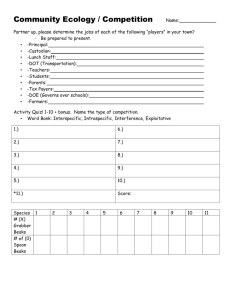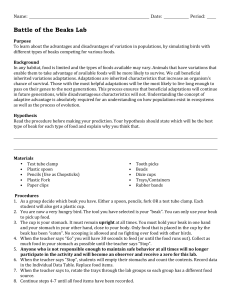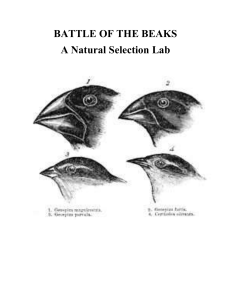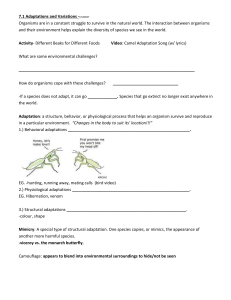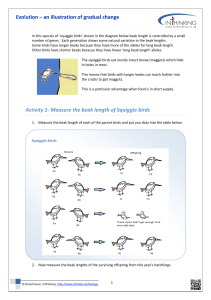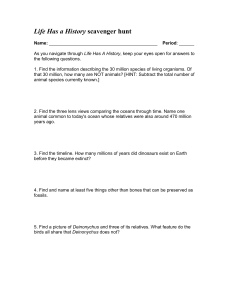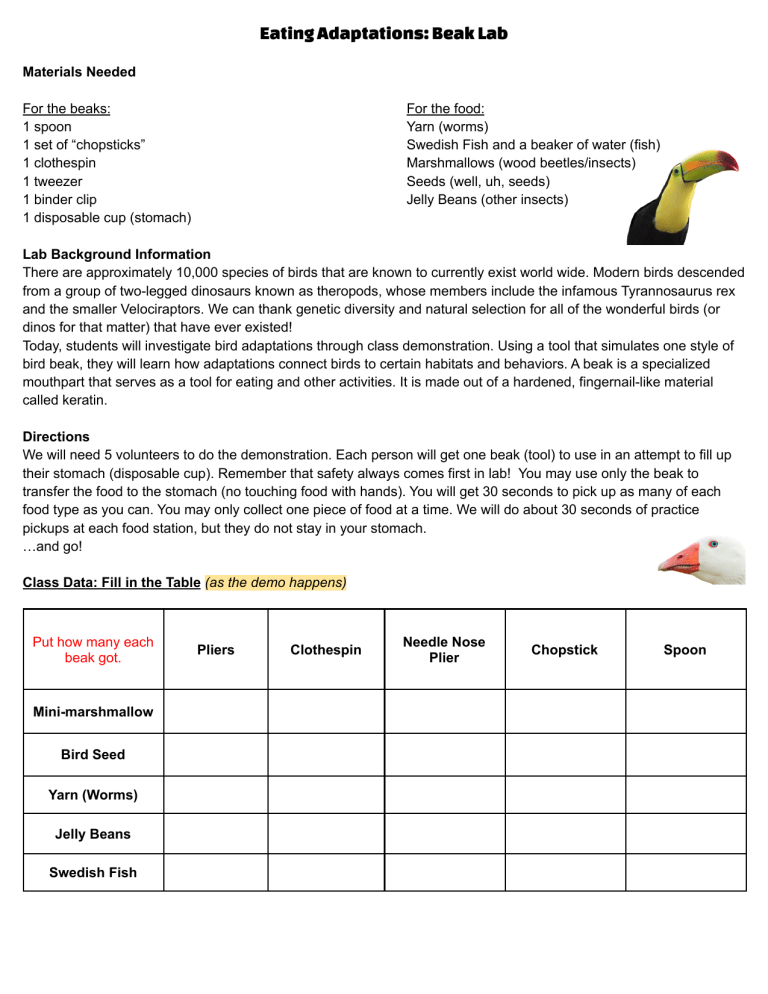
Eating Adaptations: Beak Lab Materials Needed For the beaks: 1 spoon 1 set of “chopsticks” 1 clothespin 1 tweezer 1 binder clip 1 disposable cup (stomach) For the food: Yarn (worms) Swedish Fish and a beaker of water (fish) Marshmallows (wood beetles/insects) Seeds (well, uh, seeds) Jelly Beans (other insects) Lab Background Information There are approximately 10,000 species of birds that are known to currently exist world wide. Modern birds descended from a group of two-legged dinosaurs known as theropods, whose members include the infamous Tyrannosaurus rex and the smaller Velociraptors. We can thank genetic diversity and natural selection for all of the wonderful birds (or dinos for that matter) that have ever existed! Today, students will investigate bird adaptations through class demonstration. Using a tool that simulates one style of bird beak, they will learn how adaptations connect birds to certain habitats and behaviors. A beak is a specialized mouthpart that serves as a tool for eating and other activities. It is made out of a hardened, fingernail-like material called keratin. Directions We will need 5 volunteers to do the demonstration. Each person will get one beak (tool) to use in an attempt to fill up their stomach (disposable cup). Remember that safety always comes first in lab! You may use only the beak to transfer the food to the stomach (no touching food with hands). You will get 30 seconds to pick up as many of each food type as you can. You may only collect one piece of food at a time. We will do about 30 seconds of practice pickups at each food station, but they do not stay in your stomach. …and go! Class Data: Fill in the Table (as the demo happens) Put how many each beak got. Mini-marshmallow Bird Seed Yarn (Worms) Jelly Beans Swedish Fish Pliers Clothespin Needle Nose Plier Chopstick Spoon Class Data: Construct Graphs Complete the bar graphs; make sure you add a y-axis label and title. Make sure the shape fits within the appropriate lines of the graph to make the bars. You will use this data to help you answer the questions later. Marshmallow graph: Which beak (tool) was most successful for collecting marshmallows? ________ Seed graph: Which beak (tool) was most successful for collecting seeds? ________ Yarn graph: Which beak (tool) was most successful for collecting yarn (worms)? ________ Jellybean graph: Which beak (tool) was most successful for collecting jelly beans? ________ Swedish graph: Which beak (tool) was most successful for collecting Swedish Fish? ________ Fill in the table below by matching the simulated beaks to the real beaks. Match the types of foods that you collected to the real food for the birds. Bird Species Large Tree Finch Simulated Beak Real Beak Type/Description Simulated Food Real Food Crushing; short and broad insect Scooping; rounded fish Stabbing, long, sharp Wood beetle Robin Pinching; short and somewhat pointed worm Large Ground Finch Crushing; large and broad seeds Pelican Woodpecker Critical Thinking: Analyze and Interpret (answer in complete sentences) 1. Which beaks had the most success with which food type AND WHY? Discuss all 5 beaks (pliers, needle nose pliers, spoon, chopsticks, and spoon). 2. How are beak size, shape, and strength related to an organism’s ability to meet its basic need of food? 3. What conclusions can we draw about how organisms survive? Include the vocab terms adaptation, niche, and biome in your written response.

